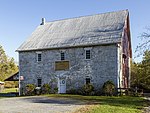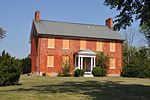Musselman High School
1949 establishments in West VirginiaEducational institutions established in 1949Public high schools in West VirginiaSchools in Berkeley County, West VirginiaUse mdy dates from November 2022
Musselman High School is a class AAA high school in Inwood, West Virginia, United States. Inwood is in Berkeley County and just outside the city of Martinsburg, the largest city in the Eastern Panhandle. Musselman High School was established in 1949. Musselman High School was named for the C.H. Musselman Company, an apple processing plant and maker of Musselman's Applesauce. The mascot is the Applemen, a Red Delicious apple with large, muscular arms and legs and an aggressive facial expression. A new school building was built for the Musselman community in 1998 to replace the aging original structure and to better serve a rapidly increasing population.
Excerpt from the Wikipedia article Musselman High School (License: CC BY-SA 3.0, Authors).Musselman High School
Musselman Drive,
Geographical coordinates (GPS) Address External links Nearby Places Show on map
Geographical coordinates (GPS)
| Latitude | Longitude |
|---|---|
| N 39.35188 ° | E -78.04163 ° |
Address
Musselman High School
Musselman Drive
25428
West Virginia, United States
Open on Google Maps










